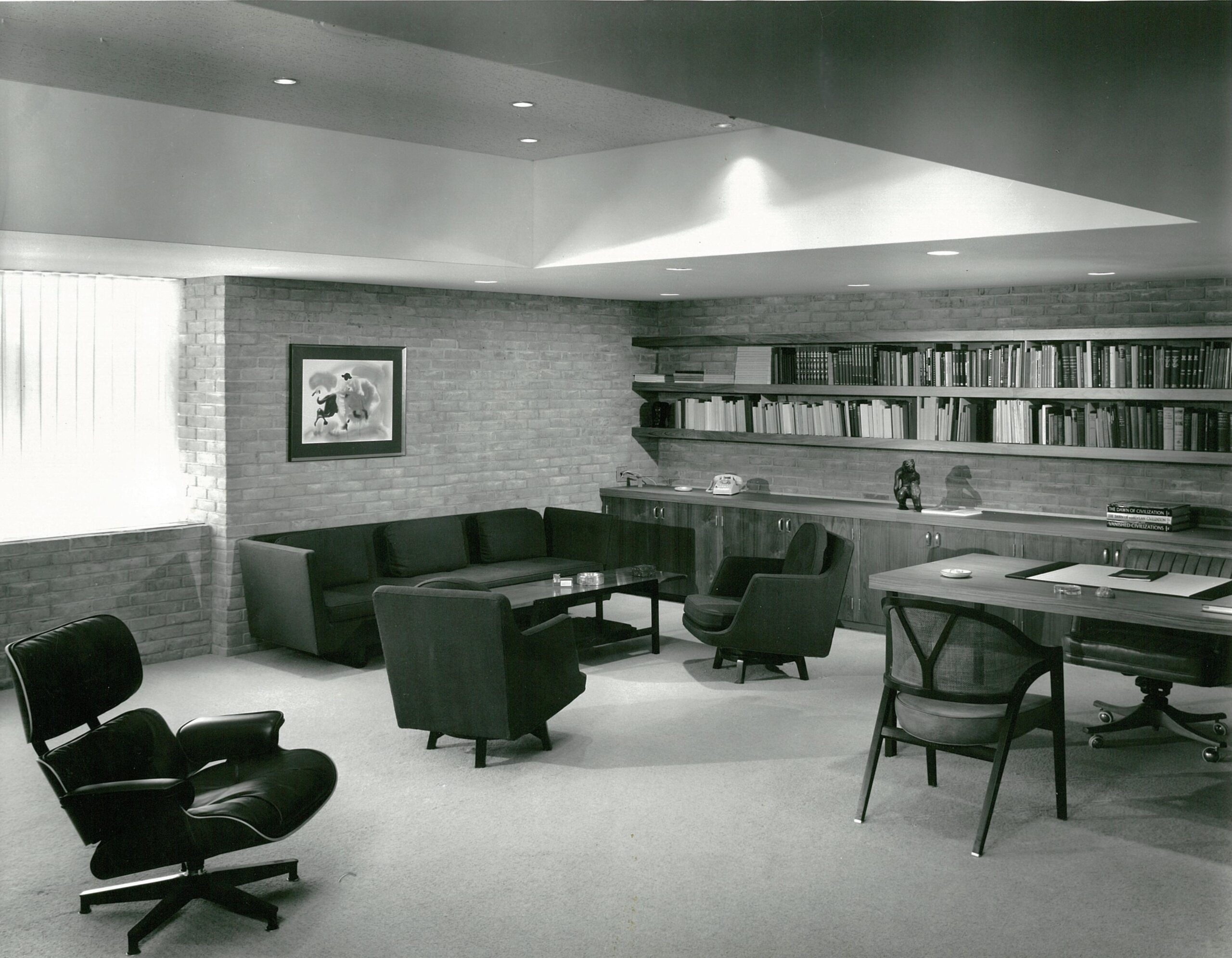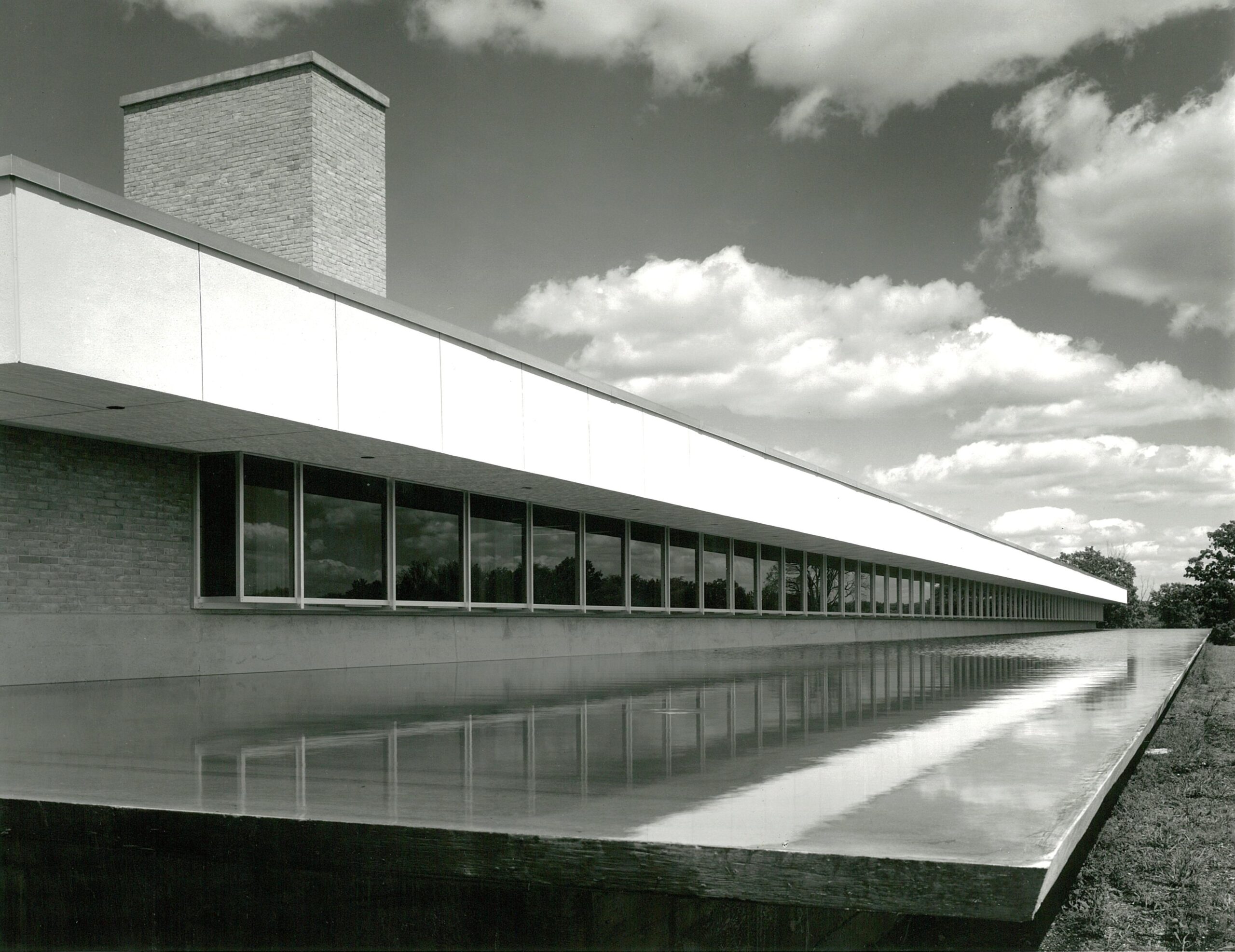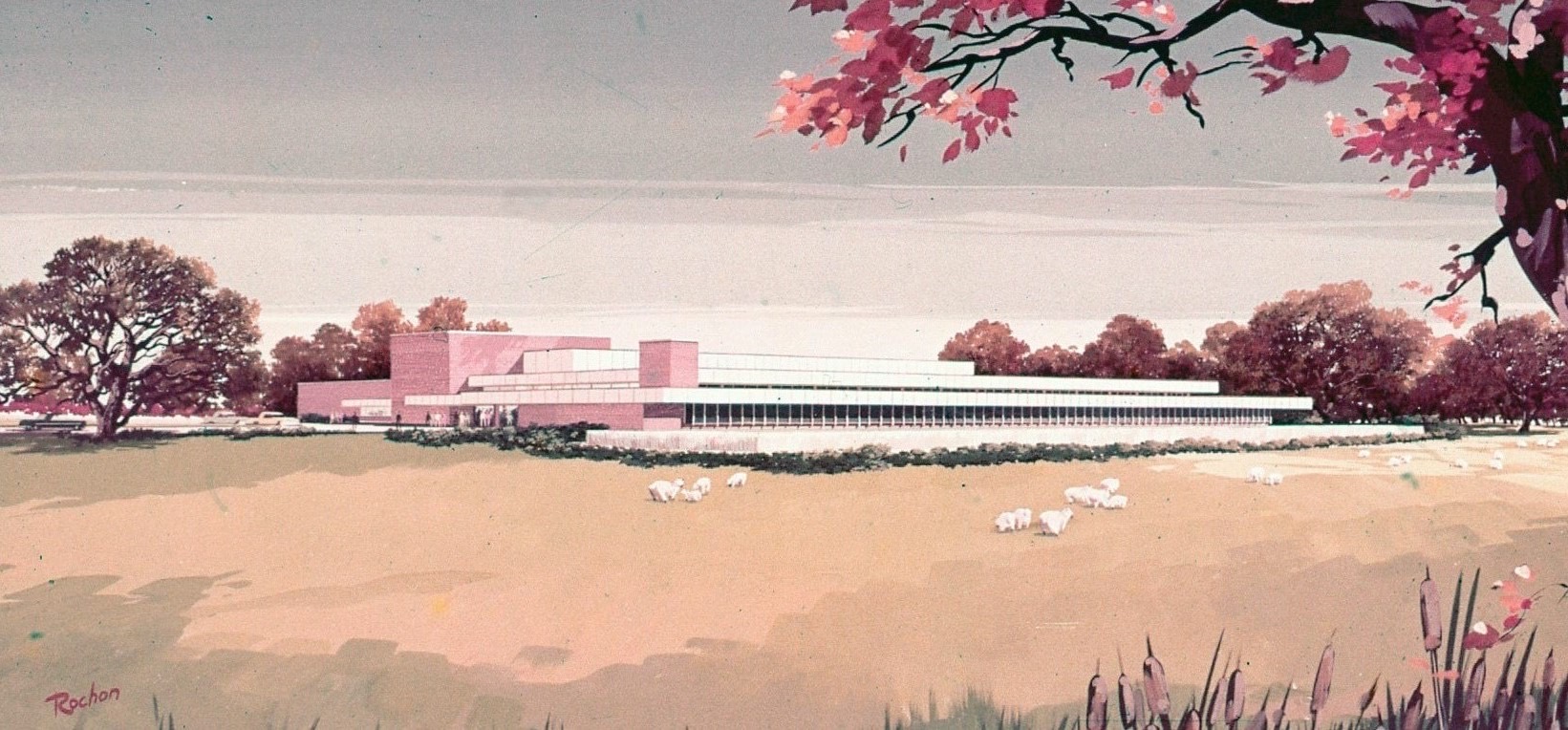Location: Ann Arbor, Michigan
Architect: Alden B. Dow
University Microfilms was founded in 1938 in Ann Arbor by Eugene Power. During World War II, Power microfilmed thousands of rare books and periodicals in British libraries to preserve their contents from possible destruction. Not long after that, his business expanded to include the large-scale microfilming of dissertations, theses, newspapers, and periodicals.
To accommodate the rapidly growing company, Alden B. Dow began the design of a new building on a flat tract of land on the outskirts of Ann Arbor in late 1963. Specifications were completed in August 1964; Spence Brothers of Saginaw was selected at the general contractor. The estimated construction cost for the 96,000 square foot building amounted to $1,722,843.
The one–story structure is set close to the ground with a tall brick central mass rising above two wings on the entrance side of the building. Stucco friezes extend over bands of windows and emphasize the simplicity and horizontality of the design. Running the length of the building on the south side is a moat for recycling the water used in processing microfilm, creating what Mr. Dow called “a reflecting pool for the offices and cafeteria.”
Approximately one-half of the vast interior space is devoted to the production of microfilm. The basement contains a large vault and rooms for mixing chemicals and processing film. The main level features three darkrooms, as well as rooms for cameras, film cutting, reading, grading, and inspection. The rest of the space consists of 23 offices for research and editorial work, a library, conference rooms, and a large dining area. The president’s office is located next to the reception/lobby area and features a raised brick fireplace.

 Over the years, UMI experienced changes in ownership as the business transitioned from microfilm to digital information products. The structure has now been vacant for over 20 years and awaits an uncertain future.
Over the years, UMI experienced changes in ownership as the business transitioned from microfilm to digital information products. The structure has now been vacant for over 20 years and awaits an uncertain future.






